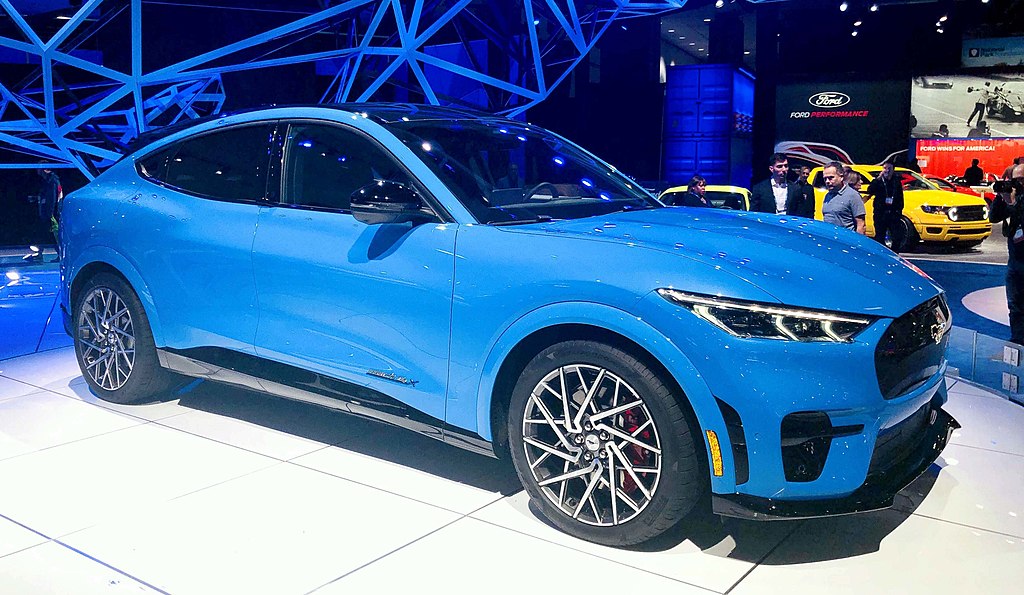Every day we wake up, drink a cup of coffee, and get ready for work. Following are a handful of stories from around the tech world condensed to fit into a single cup of coffee. These are the things you need to know before you step foot out of your door (or in front of a webcam) and into the real world this morning.
So sit back, grab a cup, and start your morning off right with a few “Quick Bytes” from Innovation & Tech Today.
Ford Joins Tesla With Price Cuts on Mustang Mach-E
Two weeks after Tesla discounted many of its models by as much as 20%, Ford has joined in with price cuts to its popular Mustang Mach-E. The price drop starts at $900 on a rear-wheel drive, standard range, entry level model, and goes as high as $5900 on the GT with extended range – coming in at around $46,000 and $6400, respectively.
That compares Tesla’s recent discounts ranging from $3000 for its base Model 3 – coming in at about $44,000, to almost $13,000 on its long range, performance Model Y.
Ford’s discounts will bring several of the Mach-E’s in under the IRS cap of $55,000 for the IRS BEV tax credit. Ford considers its electric Mustang an SUV, but the IRS isn’t buying it, so the more generous $80,000 limit won’t apply.
“We are not going to cede ground to anyone,” said Marin Gjaja, chief customer officer of Ford Model E in a statement. “We are producing more EVs to reduce customer wait times, offering competitive pricing and working to create an ownership experience that is second to none.”
NASA and DARPA Plan Nuclear Rocket Engine Test
The Defense Advanced Research Projects Agency (DARPA) is collaborating with NASA in the development of a nuclear thermal rocket engine (NTR), designed for long-duration spaceflight. They plan to conduct a test of the NTR in Earth’s orbit in 2027.
NTRs could greatly decrease flight times for longer range missions, reducing the need for supplies and the risk to systems and crews.
DARPA claims nuclear rocket engines have a thrust ratio 10,000 times greater than electric propulsion and are as much as five times more efficient than chemical propulsion.
NASA first conducted tests on nuclear rocket and Rover engines more than 50 years ago. NTRs use a fission reactor to create extremely high temperatures to expand a liquid propellant, which is exhausted through a nozzle to power the spacecraft.
“With this collaboration, we will leverage our expertise gained from many previous space nuclear power and propulsion projects,” said Jim Reuter, associate administrator for NASA’s Space Technology Mission Directorate. “Recent aerospace materials and engineering advancements are enabling a new era for space nuclear technology, and this flight demonstration will be a major achievement toward establishing a space transportation capability for an Earth-Moon economy.”
Chatbot Watermarks Could Help Teachers Spot Plagiarism
Since OpenAI’s ChatGPT 3.5 went public in November, tech-savvy students have started using the website to write term papers and essays. Because the chatbot produces unique text to each query, college and high school teachers alike have struggled to recognize AI generated text as once academically-challenged students have suddenly transformed into modern incarnations of F. Scott Fitzgerald.
Now researchers at the University of Maryland have developed a detection algorithm to place “watermarks” that can identify AI generated text with near-100% accuracy. Their work is described in a research paper and the free code is expected to be available in mid-February once the work has been peer reviewed.
The watermarking algorithm works by dividing the language model’s words into a “greenlist” and a “redlist.” If the number of greenlist words is excessive, the text was likely machine generated. That’s because chatbots, which generate text similar to the predictive text feature on a cellphone — except having learned from massive amounts of internet text — often repeat words and lack specificity.
But the technology requires the creators of the chat generated text to embed the watermarks in order to work. Although OpenAI is said to be working on watermarking, they are keeping the technology as a closely-held trade secret.
For every effort to detect plagiarized text, you can bet the cheaters will up their game as well.
Gen Z Rejecting Smartphones for Mental Health
Seeking to simplify their lives, a surprising number of Gen Z are ditching their smartphone in favor of old-style flip phones.
With more and more young people suffering depression and insecurities brought on by a barrage of toxic social media and incessant lifestyle advertising, young people are making the decision to escape the algorithms, get back to basics, and live in the moment.
“I think I wanted to win [I guess] a feeling of just being more connected to my friends and family. And then I just wanted to cut down on screen time, too,” a 23-year-old Buzzfeed reporter, Fjolla Arifi, told ABC News after using a clamshell phone exclusively for a week.
With flip phone searches racking up millions of searches on Google and social media, and showing no sign of slowing, maybe Gen Z is onto something?











